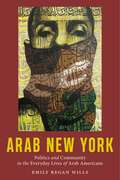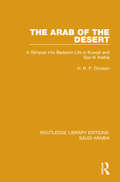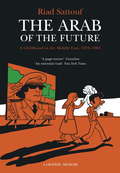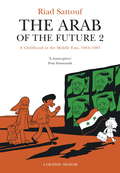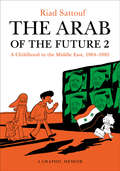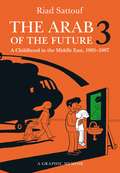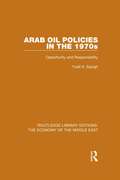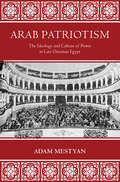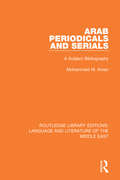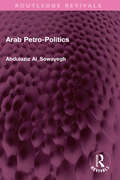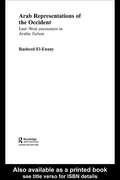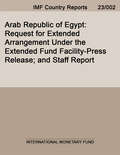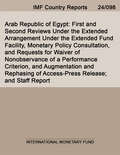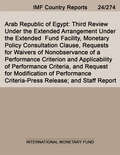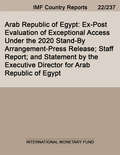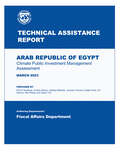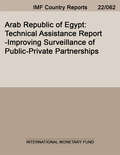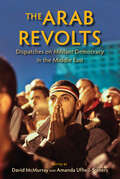- Table View
- List View
Arab New York: Politics and Community in the Everyday Lives of Arab Americans
by Emily Regan WillsFrom Bay Ridge to Astoria, explore political action in Arab New York Arab Americans are a numerically small proportion of the US population yet have been the target of a disproportionate amount of political scrutiny. Most non-Arab Americans know little about what life is actually like within Arab communities and in organizations run by and for the Arab community. Big political questions are central to the Arab American experience—how are politics integrated into Arab Americans’ everyday lives? In Arab New York, Emily Regan Wills looks outside the traditional ideas of political engagement to see the importance of politics in Arab American communities in New York. Regan Wills focuses on the spaces of public and communal life in the five boroughs of New York, which are home to the third largest concentration of people of Arab descent in the US. Many different ethnic and religious groups form the overarching Arab American identity, and their political engagement in the US is complex.Regan Wills examines the way that daily practice and speech form the foundation of political action and meaning. Drawing on interviews and participant observation with activist groups and community organizations, Regan Wills explores topics such as Arab American identity for children, relationships with Arab and non-Arab Americans, young women as leaders in the Muslim and Arab American community, support and activism for Palestine, and revolutionary change in Egypt and Yemen. Ultimately, she claims that in order to understand Arab American political engagement and see how political action develops in Arab American contexts, one must understand Arab Americans in their own terms of political and public engagement. They are, Regan Wills argues, profoundly engaged with everyday politics and political questions that don’t match up to conventional politics. Arab New York draws from rich ethnographic data and presents a narrative, compelling picture of a community engaging with politics on its own terms. Written to expand the existing literature on Arab Americans to include more direct engagement with politics and discourse, Arab New York also serves as an appropriate introduction to Arab American communities, ethnic dynamics in New York City and elsewhere in urban America, and the concept of everyday politics.
The Arab of the Desert: A Glimpse into Badawin Life in Kuwait and Saudi Arabia (Routledge Library Editions: Saudi Arabia)
by H.R.P. DicksonH.R.P. Dickson had the good fortune to spend many years among the Badawin, living and travelling with them as one of them in their own tents. In this book, first published in 1949, the author uses his great experience and knowledge to reveal all aspects of the lives of the nomadic desert Arabs, from social systems to marriage and children, from faith to food, sandstorms, warfare and hunting. The Arab of the Desert is truly a wealth of information, informed by personal insight and anecdotes.
The Arab of the Future: Volume 1: A Childhood in the Middle East, 1978-1984 - A Graphic Memoir (The Arab of the Future #1)
by Riad SattoufVOLUME 1 IN THE UNFORGETTABLE STORY OF AN EXTRAORDINARY CHILDHOODThe Arab of the Future tells the unforgettable story of Riad Sattouf's childhood, spent in the shadows of three dictators - Muammar Gaddafi, Hafez al-Assad, and his father.A GUARDIAN BOOK OF THE YEAR | AN OBSERVER GRAPHIC BOOK OF THE YEAR | A NEW YORK TIMES CRITICS' TOP BOOK OF THE YEAR'I tore through it... The most enjoyable graphic novel I've read in a while' Zadie Smith'I joyously recommend this book to you' Mark Haddon'Riad Sattouf is one of the great creators of our time' Alain De Botton'Beautifully-written and drawn, witty, sad, fascinating... Brilliant' Simon Sebag MontefioreIn a striking, virtuoso graphic style that captures both the immediacy of childhood and the fervour of political idealism, Riad Sattouf recounts his nomadic childhood growing up in rural France, Gaddafi's Libya, and Assad's Syria - but always under the roof of his father, a Syrian Pan-Arabist who drags his family along in his pursuit of grandiose dreams for the Arab nation.Riad, delicate and wide-eyed, follows in the trail of his mismatched parents: his mother, a bookish French student, is as modest as his father is flamboyant. Venturing first to the Great Socialist People's Libyan Arab State and then joining the family tribe in Homs, Syria, they hold fast to the vision of the paradise that always lies just around the corner. And hold they do, though food is scarce, children kill dogs for sport, and with locks banned, the Sattoufs come home one day to discover another family occupying their apartment. The ultimate outsider, Riad, with his flowing blond hair, is called the ultimate insult... Jewish. And in no time at all, his father has come up with yet another grand plan, moving from building a new people to building his own great palace.Brimming with life and dark humour, The Arab of the Future reveals the truth and texture of one eccentric family in an absurd Middle East, and also introduces a master cartoonist in a work destined to stand alongside Maus and Persepolis.Translated by Sam Taylor.'ENGROSSING' New York Times'A PAGE TURNER' Guardian'MARVELLOUS... BEGS TO BE READ IN ONE LONG SITTING' Herald'AN OBJECT OF CONSENSUAL RAPTURE' New Yorker'ONE OF THE GREATEST CARTOONISTS OF HIS GENERATION' Le Monde
The Arab of the Future 2: Volume 2: A Childhood in the Middle East, 1984-1985 - A Graphic Memoir (The Arab of the Future #2)
by Riad SattoufVOLUME 2 IN THE UNFORGETTABLE STORY OF AN EXTRAORDINARY CHILDHOODRiad Sattouf continues his heart-rending, darkly comic story of a childhood spent split between France and the Middle East in The Arab of the Future 2. 'I tore through it... The most enjoyable graphic novel I've read in a while' Zadie Smith'I joyously recommend this book to you' Mark Haddon'Riad Sattouf is one of the great creators of our time' Alain De Botton'Beautifully-written and drawn, witty, sad, fascinating... Brilliant' Simon Sebag MontefioreNow settled in his father's village of Ter Maaleh near Homs, Riad finally begins school, where he dedicates himself to becoming a true Syrian in the country of the dictator Hafez Al-Assad. Told simply yet with devastating effect, Riad's story takes in the sweep of Middle Eastern life of the 1980s, but it is steered by acutely observed small moments: the daily sadism of his schoolteachers, the cruelty and vulnerability of his fellow students, and the obsequiousness of his father in the company of those close to the regime. And as the family strains to fit in, one chilling, barbaric act drives the Sattoufs to take the most dramatic of steps. Immediate and gripping, The Arab of the Future 2 once again reveals the inner workings of a tormented country and a tormented family, delivered through Riad Sattouf 's dazzlingly original graphic style.Translated by Sam Taylor.***THE ARAB OF THE FUTURE - THE INTERNATIONAL SENSATION***A GUARDIAN BOOK OF THE YEAR | AN OBSERVER GRAPHIC BOOK OF THE YEAR | A NEW YORK TIMES CRITICS' TOP BOOKS OF THE YEAR | #1 INTERNATIONAL BESTSELLER | WINNER OF THE FAUVE D'OR PRIZE FOR BEST ALBUM OF THE YEAR | WINNER OF THE LA TIMES BOOK PRIZE FOR GRAPHIC NOVELS | NOMINATED FOR 'BEST REALITY-BASED WORK' AT THE EISNER AWARDS
The Arab of the Future 2: A Childhood in the Middle East, 1984-1985: A Graphic Memoir (The Arab of the Future #2)
by Riad SattoufThe highly anticipated continuation of Riad Sattouf’s internationally acclaimed, #1 French bestseller, which was hailed by The New York Times as “a disquieting yet essential read”In The Arab of the Future: Volume 1, cartoonist Riad Sattouf tells of the first years of his childhood as his family shuttles back and forth between France and the Middle East. In Libya and Syria, young Riad is exposed to the dismal reality of a life where food is scarce, children kill dogs for sport, and his cousins, virulently anti-Semitic and convinced he is Jewish because of his blond hair, lurk around every corner waiting to beat him up. In Volume 2, Riad, now settled in his father’s hometown of Homs, gets to go to school, where he dedicates himself to becoming a true Syrian in the country of the dictator Hafez Al-Assad. Told simply yet with devastating effect, Riad’s story takes in the sweep of politics, religion, and poverty, but is steered by acutely observed small moments: the daily sadism of his schoolteacher, the lure of the black market, with its menu of shame and subsistence, and the obsequiousness of his father in the company of those close to the regime. As his family strains to fit in, one chilling, barbaric act drives the Sattoufs to make the most dramatic of changes. Darkly funny and piercingly direct, The Arab of the Future, Volume 2 once again reveals the inner workings of a tormented country and a tormented family, delivered through Riad Sattouf’s dazzlingly original talent.
The Arab of the Future 3: Volume 3: A Childhood in the Middle East, 1985-1987 - A Graphic Memoir (The Arab of the Future #3)
by Riad SattoufVOLUME 3 IN THE UNFORGETTABLE STORY OF AN EXTRAORDINARY CHILDHOODPraise for The Arab of the Future series'I TORE THROUGH IT... THE MOST ENJOYABLE GRAPHIC NOVEL I'VE READ IN A WHILE' Zadie Smith'I JOYOUSLY RECOMMEND THIS BOOK TO YOU' Mark Haddon'RIAD SATTOUF IS ONE OF THE GREAT CREATORS OF OUR TIME' Alain De Botton'A MASTERPIECE' Posy Simmonds | 'EXCELLENT' Guardian | 'Superb' SpectatorAfter having followed her husband to Libya and then to Syria, Riad's mother can't take any more of village life in Ter Maaleh: she wants to go back to France. Young Riad sees his father torn between his wife's aspirations and the weight of family traditions...The Arab of the Future tells the story of Riad Sattouf's childhood in the Middle East. The first volume covers the period from 1978 to 1984: from birth to the age of six, little Riad is shuttled between Libya, Brittany and Syria. The second volume tells the story of his first year of school in Syria (1984-1985). This third volume sees him between the ages of six and nine, the time he becomes aware of the society he is growing up in. Can you celebrate Christmas in Ter Maaleh? Were there video clubs in Homs? How do children of eight fast for Ramadan? Was Conan the Barbarian circumcised? Were Breton villagers kinder to their animals than their Syrian counterparts? How far will Riad go to please his father? And how far will his father go to become an important man in the Syria of Hafez Al-Assad?Translated by Sam Taylor.***THE ARAB OF THE FUTURE - THE INTERNATIONAL SENSATION***1 MILLION COPIES SOLD WORLDWIDE | #1 BESTSELLER IN FRANCE | GUARDIAN 'BEST GRAPHIC BOOKS OF 2015' PICK | NY TIMES EDITOR'S CHOICE |
The Arab of the Future 3: A Childhood in the Middle East, 1985-1987 (The Arab of the Future #3)
by Riad SattoufIn the third installment of the acclaimed series, the Sattouf family begins to implode under the pressure of Hafez al-Assad's regime and the suffocation of their rural Syrian village.The Arab of the Future is the widely acclaimed, internationally bestselling graphic memoir that tells the story of Riad Sattouf’s peripatetic childhood in the Middle East. In the first volume, which covers the years 1978–1984, his family moves between rural France, Libya, and Syria, where they eventually settle in his father’s native village of Ter Maaleh, near Homs. The second volume recounts young Riad’s first year attending school in Syria (1984–1985), where he dedicates himself to becoming a true Syrian in the country of Hafez al-Assad. In this third volume, (1985–1987), Riad’s mother, fed up with the grinding reality of daily life in the village, decides she cannot take it any longer. When she resolves to move back to France, young Riad sees his father torn between his wife’s aspirations and the weight of family traditions.
The Arab of the Future 4: A Graphic Memoir of a Childhood in the Middle East, 1987-1992 (The Arab of the Future #4)
by Riad SattoufThe penultimate installment in the bestselling French graphic memoir series—hailed as “exquisitely illustrated” and “irresistible”—covering the years of Riad Sattouf’s adolescence, from 1987-1992.In the fourth volume of The Arab of the Future, little Riad has grown into a teenager. In the previous books, his childhood was complicated by the pull of his two cultures—French and Syrian—and his parents’ deteriorating relationship. Now his father, Adbel-Razak, has left to take a job in Saudi Arabia, and after making a pilgrimage to Mecca, turns increasingly towards religion. But after following him from place to place and living for years under the harsh conditions of his impoverished village, Riad’s mother Clementine has had enough. Refusing to live in a country where women have no rights, she returns with her children to live in France with her own mother… until Abdel-Razak shows up unexpectedly to drag the family on yet another journey.As the series builds to a climax, we see Riad struggle with problems both universal (bullies at school) and specific (his mother’s sudden illness, the judgment of his religious relatives). And as Abdel-Razak returns again to the same fantastical dreams he pursued in previous books, we see him become more and more unhinged, until ultimately he crosses the line from idealism to fanaticism, leading to a dramatic breaking point.Full of the same gripping storytelling and lush visual style for which Sattouf’s previous works have won numerous awards, The Arab of the Future 4 continues the saga of the Sattouf family and their peripatetic life in France and the Middle East.
Arab Oil Policies in the 1970s: Opportunity and Responsibility (Routledge Library Editions: The Economy of the Middle East)
by Yusuf A. SayighUntil 1973 few people, either in the advanced, industrial countries or in the developing countries of the Third World, thought seriously on the issues and complexities involved in the production and marketing of the oil on which they relied. It was only with the sudden steep increases in oil prices that the oil industry became a matter of general discussion, and the Organisation of Petroleum Exporting Countries (OPEC) became a front page topic for analysis and comment. However, real understanding of the organisation and its policies did not accompany this rush of interest and much confusion has followed. In particular, the Arab exporters have received the weight of the criticism although they have only a share in the market and not a monopoly. This book attempts to instil a greater mutual understanding between oil exporters and importers, although it is not a wholesale endorsement of Arab policies, by outlining the major policy areas in this field. It looks at new policy options and their implications in exploration, marketing and pricing and at downstream operations such as the petrochemical and gas industries. In conclusion, this study identifies the wide-ranging opportunities that the new oil policies have opened up for the Arab countries, in the national, regional and international context, and assesses and clarifies the responsibilities which accompany this success. First published in 1983.
Arab Patriotism: The Ideology and Culture of Power in Late Ottoman Egypt
by Adam MestyanArab Patriotism presents the essential backstory to the formation of the modern nation-state and mass nationalism in the Middle East. While standard histories claim that the roots of Arab nationalism emerged in opposition to the Ottoman milieu, Adam Mestyan points to the patriotic sentiment that grew in the Egyptian province of the Ottoman Empire during the nineteenth century, arguing that it served as a pivotal way station on the path to the birth of Arab nationhood. Through extensive archival research, Mestyan examines the collusion of various Ottoman elites in creating this nascent sense of national belonging and finds that learned culture played a central role in this development. Mestyan investigates the experience of community during this period, engendered through participation in public rituals and being part of a theater audience. He describes the embodied and textual ways these experiences were produced through urban spaces, poetry, performances, and journals. From the Khedivial Opera House's staging of Verdi's Aida and the first Arabic magazine to the ‘Urabi revolution and the restoration of the authority of Ottoman viceroys under British occupation, Mestyan illuminates the cultural dynamics of a regime that served as the precondition for nation-building in the Middle East. A wholly original exploration of Egypt in the context of the Ottoman Empire, Arab Patriotism sheds fresh light on the evolving sense of political belonging in the Arab world.
Arab Periodicals and Serials: A Subject Bibliography (Routledge Library Editions: Language & Literature of the Middle East)
by Mohammad M. AmanThis bibliography, first published in 1979, is a guide to serials and periodicals in Arabic, English, French and other European languages published in the Arab countries or in the Western hemisphere. Arab serials and periodicals are considered primary sources of information on subject matters related to the Arab world. Lack of comprehensive bibliographies of Arab serials in the English language has hindered the work of librarians and Middle East specialists who need to identify a large number of such publications published in and about the Arab world. This bibliography is a research tool designed specifically to fill that gap.
Arab Petro-Politics (Routledge Revivals)
by Abdulaziz Al_SowayeghFirst Published in 1984, Arab Petro-Politics argues that oil is important to Arab world both as an instrument for economic development and as an element of political influence. Oil has changed the political and economic structures and policies in the Middle East and dramatically influenced political alignments both within the region and between the region and the world’s greatest powers. The book seeks to explain Arab oil policy both in economic terms and as political leverage to support Arab demands. Its main thesis is that the oil crisis is inextricably part of the Arab Israeli conflict despite the tendency amongst Western Middle East specialists to separate oil question from the Palestinian issue. This book is an important historical document for scholars and researchers of international oil economics, Middle East politics, and Middle East history.
Arab Regionalism: A Post-Structural Perspective (Routledge Studies in Middle Eastern Politics)
by Silvia FerabolliArab regionalism details and examines the power relations involved in the making of an Arab region. On an empirical level, this book concentrates on the drawing of topographic and ideational boundaries in the Arab region, on Arab regional organizations, on the functional cooperation among Arab states and institutions, and on the socio-cultural infra-structure that supports the Arab region making process, with a strong focus on post-1990 dynamics. On a theoretical level, this work makes a case for the analytical autonomy of "Arab" regionalism (as opposed to regionalism in the Middle East or in the Mediterranean) and for the necessity of approaching it as an actual process instead of a failed project. The attitude of debasement and erasure towards Arab regionalism that is common-place in the field of regional studies is replaced in this book for the acknowledgment that there is much more political coordination, economic cooperation and social integration in the Arab region than has previously been assumed. Providing a fresh perspective on Arab regionalism, this book will be an essential resource for scholars and researchers with an interest in Regionalism, Middle Eastern Politics and International Relations.
Arab Representations of the Occident: East-West Encounters in Arabic Fiction (Culture and Civilization in the Middle East)
by Rasheed El-EnanyThis is one of the first books in English to explore Arab responses to Western culture and values in modern Arab literature. Through in-depth research El-Enany examines the attitudes as expressed mainly through works of fiction written by Arab authors during the twentieth, and, to a lesser extent, nineteenth century. It constitutes an original addition to the age-old East-West debate, and is particularly relevant to the current discussion on Islam and the West. Alongside raising highly topical questions about stereotypical ideas concerning Arabs and Muslims in general, the book explores representations of the West by the foremost Arab intellectuals over a two-century period, up to the present day, and will appeal to those with an interest in Islam, the Middle East, nationalism and the so-called ‘Clash of Civilizations’.
Arab Republic of Egypt: 2007 Article IV Consultation--Staff Report; Staff Statement; Public Information Notice on the Executive Board Discussion; and Statement by the Executive Director for the Arab Republic of Egypt
by International Monetary FundA report from the International Monetary Fund.
Arab Republic of Egypt: 2017 Article Iv Consultation, Second Review Under The Extended Arrangement Under The Extended Fund Facility, And Request For Modification Of Performance Criteria-press Release; Staff Report; And Statement By The Executive Director For The Arab Republic Of Egypt (Imf Staff Country Reports)
by International Monetary Fund. Middle East and Central Asia Dept.A report from the International Monetary Fund.
Arab Republic of Egypt: First And Second Reviews Under The Extended Arrangement Under The Extended Fund Facility, Monetary Policy Consultation, And Requests For Waiver Of Nonobservance Of A Performance Criterion, And Augmentation And Rephasing Of Access-press Release; And Staff Report (Imf Staff Country Reports)
by International Monetary Fund. Middle East and Central Asia Dept.A report from the International Monetary Fund.
Arab Republic of Egypt: Third Review Under The Extended Arrangement Under The Extended Fund Facility, Monetary Policy Consultation Clause, Requests For Waivers Of Nonobservance Of A Performance Criterion And Applicability Of Performance Criteria, And Request For Modification Of Performance Criteria-press Release; And Staff Report (Imf Staff Country Reports)
by International Monetary Fund. Middle East and Central Asia Dept.A report from the International Monetary Fund.
Arab Republic of Egypt: 2005 Article IV Consultation--Staff Report; Public Information Notice on the Executive Board Discussion; and Statement by the Executive Director for the Arab Republic of Egypt
by Lorenzo Pérez Carlo CottarelliA report from the International Monetary Fund.
Arab Republic of Egypt: Ex-Post Evaluation of Exceptional Access Under the 2020 Stand-By Arrangement-Press Release; Staff Report; and Statement by the Executive Director for Arab Republic of Egypt
by International Monetary Fund. Middle East and Central Asia Dept.A report from the International Monetary Fund.
Arab Republic of Egypt: Technical Assistance Report-Climate Public Investment Management Assessment
by International Monetary Fund. Fiscal Affairs Dept.A report from the International Monetary Fund.
Arab Republic of Egypt: Technical Assistance Report-Improving Surveillance of Public-Private Partnerships (Imf Staff Country Reports)
by International Monetary Fund. Fiscal Affairs Dept.A report from the International Monetary Fund.
Arab Republic of Egypt: Technical Assistance Report-Public Investment Management Assessment
by International Monetary Fund. Fiscal Affairs Dept.A report from the International Monetary Fund.
Arab Resources: The Transformation of a Society (Routledge Library Editions: Society of the Middle East #3)
by I. IbrahimThe modern Arab world is faced with a serious problem in the imbalance between human and natural resources. The Gulf states, with their vast natural resources, are poor in human resources, whereas in Egypt or Jordan the picture is reversed. This study, first published in 1983, considers the range of factors affecting development in the Arab world and examines the broad sectoral resources, the infrastructure for resource development and the range of problems shaping the political economy of Arab advancement. In conclusion, an analysis is made of the existing trends in the transformation of Arab society and ways are suggested in which these trends will develop over the next decade.
The Arab Revolts: Dispatches on Militant Democracy in the Middle East (Public Cultures of the Middle East and North Africa)
by David McMurray and Amanda Ufheil-SomersA collection of essays examining the underlying causes of 2011’s Arab uprisings in Tunisia, Egypt, Bahrain, Syria, and Yemen.The 2011 eruptions of popular discontent across the Arab world, popularly dubbed the Arab Spring, were local manifestations of a regional mass movement for democracy, freedom, and human dignity. Authoritarian regimes were either overthrown or put on notice that the old ways of oppressing their subjects would no longer be tolerated. These essays from Middle East Report—the leading source of timely reporting and insightful analysis of the region—cover events in Tunisia, Egypt, Bahrain, Syria, and Yemen. Written for a broad audience of students, policymakers, media analysts, and general readers, the collection reveals the underlying causes of the revolts by identifying key trends during the last two decades leading up to the recent insurrections.“This is easily the best volume on the Arab uprisings yet published. The material is very strong and accessibly written, providing rich background on the political and economic contexts in the region prior to the uprisings as well as after the events of 2011 unfolded, based on substantive knowledge. . . . Ideal for students, policymakers, and general readers.” —Jillian Schwedler, University of Massachusetts“For anyone trying to understand the processes of popular revolt and mechanisms of repression, The Arab Revolts is a good place to start.” —Anthropology of Contemporary Middle-East and Central Eurasia“This excellent collection of articles from Middle East Report provides an unusually deep and wide analysis of the phenomena collectively known as the Arab Spring. . . . The articles are well written and accessible to students, as well as to general readers, and hold much interest to specialists in Middle East politics as well.” —Review of Middle East Studies“The editors of this exceptionally well-conceptualized collection have chosen writings that complement each other well. Each section begins with the present-day situation, and the subsequent essays describe the historical background of mass protests. At the end of each section is a writing that connects the historical themes back to the modern protest movements.” —Against the Current
